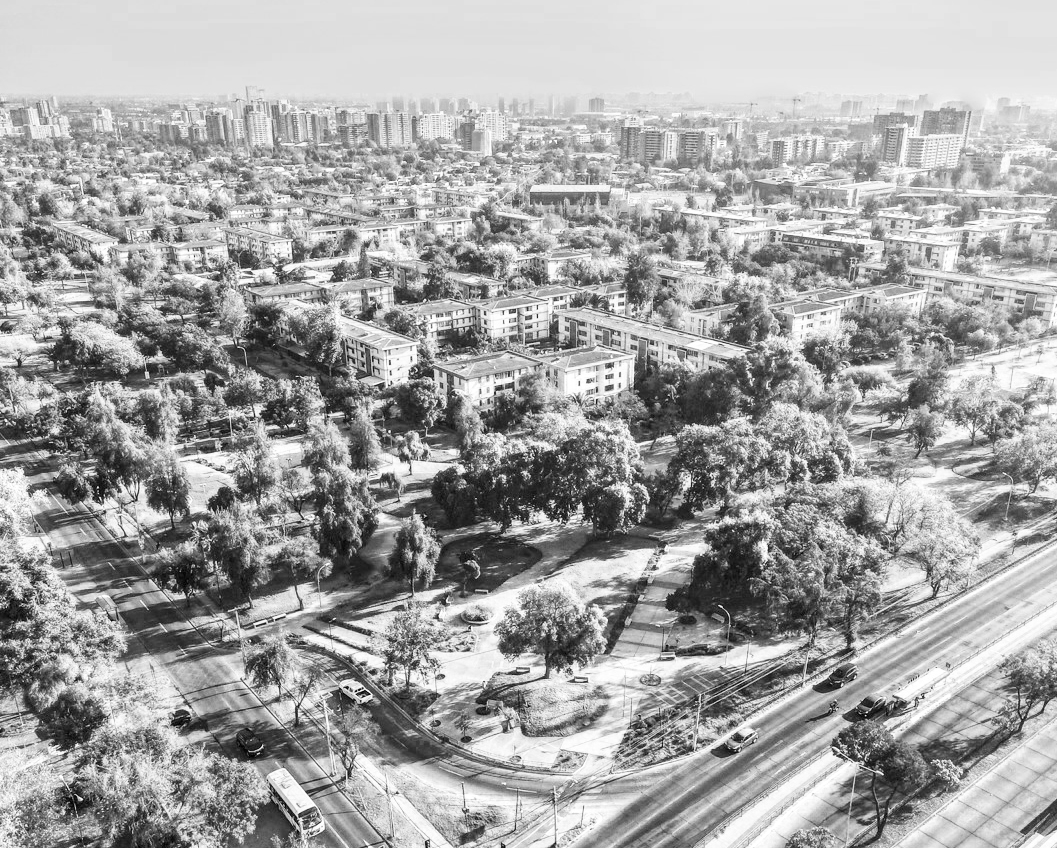Servicios ecosistémicos: el otro patrimonio de los conjuntos habitacionales modernos. El caso de Ñuñoa (Santiago, Chile)
Contenido principal del artículo
Resumen
Las amplias áreas verdes son parte del patrimonio de numerosos conjuntos habitacionales de arquitectura moderna. En Santiago de Chile, basta caminar por algunos conjuntos de la antigua Corporación de la Vivienda (CORVI) para observar que entre sus bloques aislados existe numerosa vegetación sobre amplias superficies de suelo permeable, es decir, capaz de absorber agua. Suelo que, por un lado, se encuentra rodeando inmediatamente los bloques, así como también a lo largo de las avenidas que los circundan.
En contexto de cambio climático estos atributos espaciales tienen especial valor instrumental para las ciencias naturales. Desde el enfoque de los Servicios Ecosistémicos, específicamente los de regulación, es posible identificar y medir como estos atributos contribuyen, entre otras, con la mitigación de la temperatura máxima. En este sentido, el objetivo de este artículo es revelar cómo la estructura urbana, y las formas de agrupación de la vegetación que dependen de ésta, influyen en la disminución de la temperatura superficial al interior de un grupo de 9 conjuntos habitacionales construidos entre 1945 y 1970 en la comuna de Ñuñoa (Santiago, Chile). En ellos se realiza una lectura cruzada entre planos Nolli, imágenes satelitales y dos instrumentos de teledetección: el Índice de Vegetación de Diferencia Normalizada (NDVI) y el Índice de Temperatura Superficial de la Tierra (LST).
Los resultados indican que es posible identificar como el sistema de agrupación de bloques junto a parques tienen la capacidad de disminuir la temperatura máxima, gracias a la baja proporción de suelo sellado por hormigón, contrario a la alta proporción de suelo permeable rodeando los bloques habitacionales.
Descargas
Detalles del artículo

Esta obra está bajo una licencia internacional Creative Commons Atribución-NoComercial-SinDerivadas 4.0.

